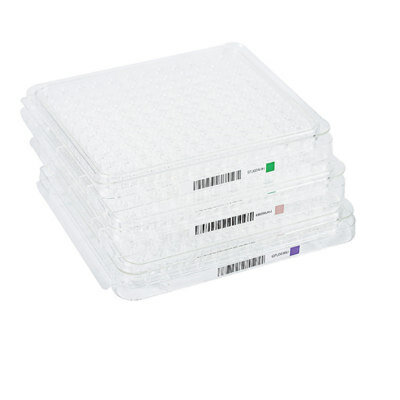Extra Centrosomes Cause Cancer Cell Chromosomal Instability
By LabMedica International staff writers
Posted on 18 Jun 2009
Cancer cell biologists have identified a molecular mechanism that explains why many of the cells that make up a tumor contain an abnormal number of chromosomes.Posted on 18 Jun 2009
While it seemed reasonable to link the abnormal number of chromosomes (known as chromosomal instability [CIN]) in cancer cells to the presence of extra centrosomes, a direct mechanistic link between extra centrosomes and CIN was never established. The consensus has been that extra centrosomes generate CIN by promoting multipolar anaphase, a highly abnormal division that produces three or more aneuploid daughter cells.
In the current study, investigators from the Dana-Farber Cancer Institute (Boston, MA, USA) used long-term live-cell imaging to demonstrate that cells with multiple centrosomes rarely underwent multipolar cell divisions, and the progeny of these divisions were typically unable to survive. Thus, CIN could not be explained by the multipolar divisions theory.
In the June 7, 2009, online edition of the journal Nature the investigators published results from a study designed to identify the mechanism underlying the cancer cells' mitotic defect. To this end, they generated cells that differed only in their centrosome number. They demonstrated that extra centrosomes alone were sufficient to promote chromosome missegregation during bipolar cell division. These segregation errors were a consequence of cells passing through a transient "multipolar spindle intermediate” in which microtubule attachment errors accumulated before centrosome clustering and anaphase. These findings showed a direct mechanistic link between extra centrosomes and CIN, two common characteristics of solid tumors.
"We showed that even though most cancer cells with extra centrosomes form a single mitotic spindle, they pass through a brief "multipolar spindle” stage,” said first author Dr. Neil Ganem, a postdoctoral fellow at the Dana-Farber Cancer Institute. "The presence of this unique spindle configuration causes a few chromosomes to attach improperly to the eventual two-ended spindle. That, in turn, disrupts the normally orderly process by which chromosomes are pulled into the daughter cells.”
"Chromosome instability is a hallmark of most cancer cells, arising when chromosomes are missegregated into daughter cells during division,” said Dr. Ganem. "Such instability may be a double-edged sword. It may confer a survival benefit on cancer cells by enabling them to adapt to a stressful environment in the body or by helping them become resistant to chemotherapy drugs. But it may also have deleterious effects that could make tumor cells susceptible to therapeutic attack.”
Related Links:
Dana-Farber Cancer Institute









 Urine Drug Test.jpg)




